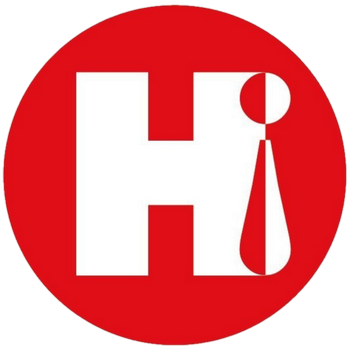MINITURE ART THE LANGUAGE MAHA AHMED CHOSE TO COMMUNICATE IN
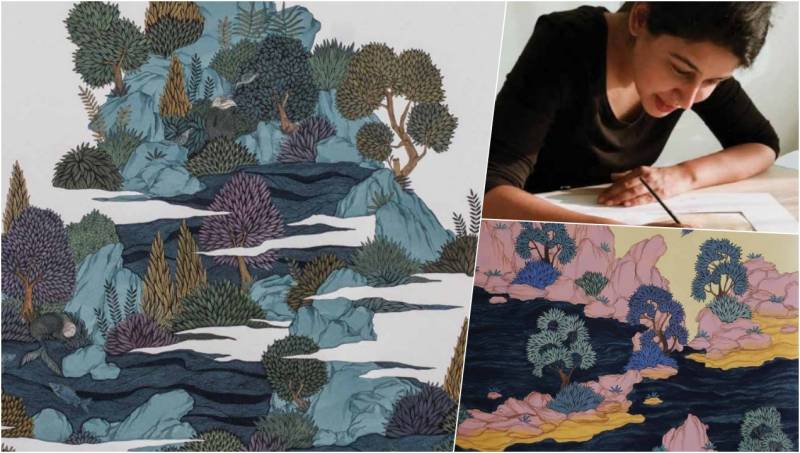
'‘In Harmony’ is the last of my series on motherhood so far. It is portraying a moment of peace within myself — a short fleeting moment.'
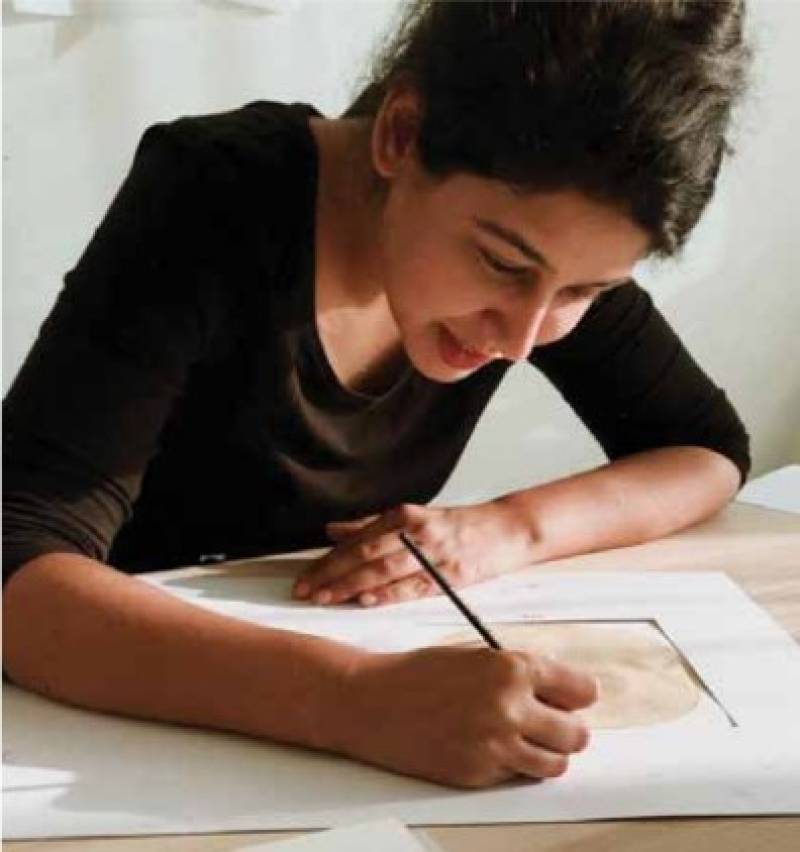
Dubai-based artist Maha Ahmed exclusively fills us in on her journey as an artist. She tells us her paintings draw inspiration from a range of sources; the places she has lived in play a pivotal role in the development of her practice. She also lets us in on where she finds her inspiration from and about her recent artwork ‘In Harmony’ that was showcased at the 16th edition of Art Dubai. Read on…
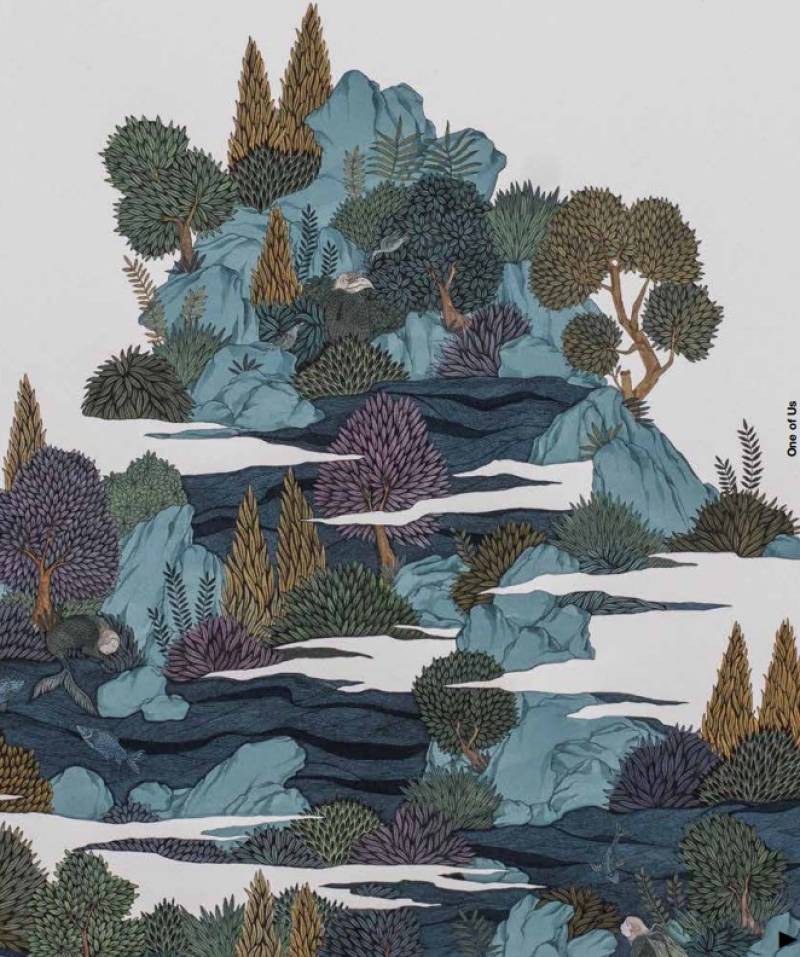
Hi Maha, it’s a pleasure to have you here. Tell us a bit about yourself and your journey as a painter and an artist?
Hello, thank you for having me. I am an artist that works primarily in the traditional medium of miniature painting. My interest lies in the deconstruction of identity, particularly the relationship between the self and the other. My most recent solo show, titled ‘The Spaces Between’ at Kristin Hjellegjerde Gallery shifted my focus inward. I created it during the early months of motherhood. It was an attempt to navigate and explore a new, shifting sense of self. These days I’m working on a new series for my first solo show in India with Galerie Isa. It is a great honour to be represented by Kristin Hjellegjerde Gallery and Galerie Isa. Over the course of my artistic career, I’ve had the opportunity to live and work in culturally diverse cities such as Lahore, London and Tokyo. I’m currently based in Dubai. My paintings draw inspiration from a range of sources; the places I have lived in play a pivotal role in the development of my practice. The imagery found in my painting is reminiscent of Persian and Mughal illuminated manuscripts, as well as the contemplative, meditative compositions of Japanese traditional paintings and prints. At the moment I’m reading ‘Kalila and Dimna’ in hope to find inspiration, and adding a new layer of symbolism to my practice.
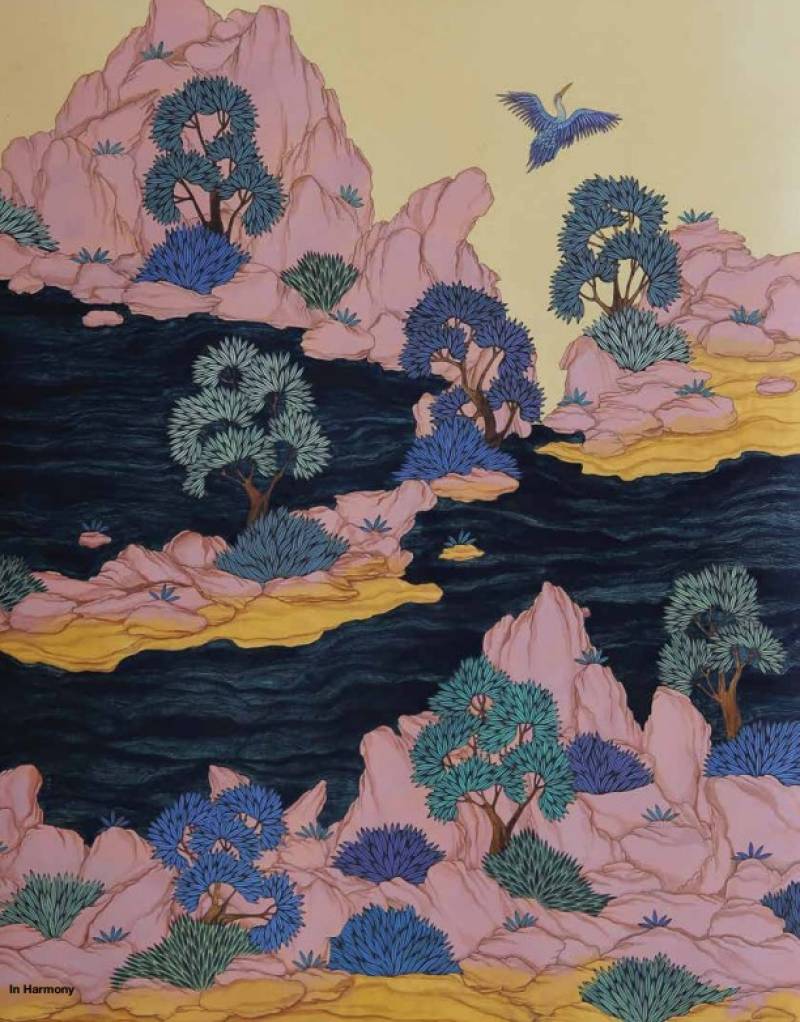
You recently represented Pakistan with your artworks exhibited at the 16th edition of Art Dubai as well as in 2020. Tell us more about this? How was the experience and how did you land this opportunity?
Yes! I was showing with Kristin Hjellegjerde Gallery alongside artists Nazir Tanbouli, Houda Terjuman, Bea Bonafini, Kimathi Mafafo and Afifa Aleiby this year at Art Dubai. It is always such a pleasure. I have been working with Kristin since the beginning of my c a r e e r. H e r s u p p o r t a n d commitment towards her artists is palpable and unwavering. I’m extremely grateful to have had her support from the early stages of my career.
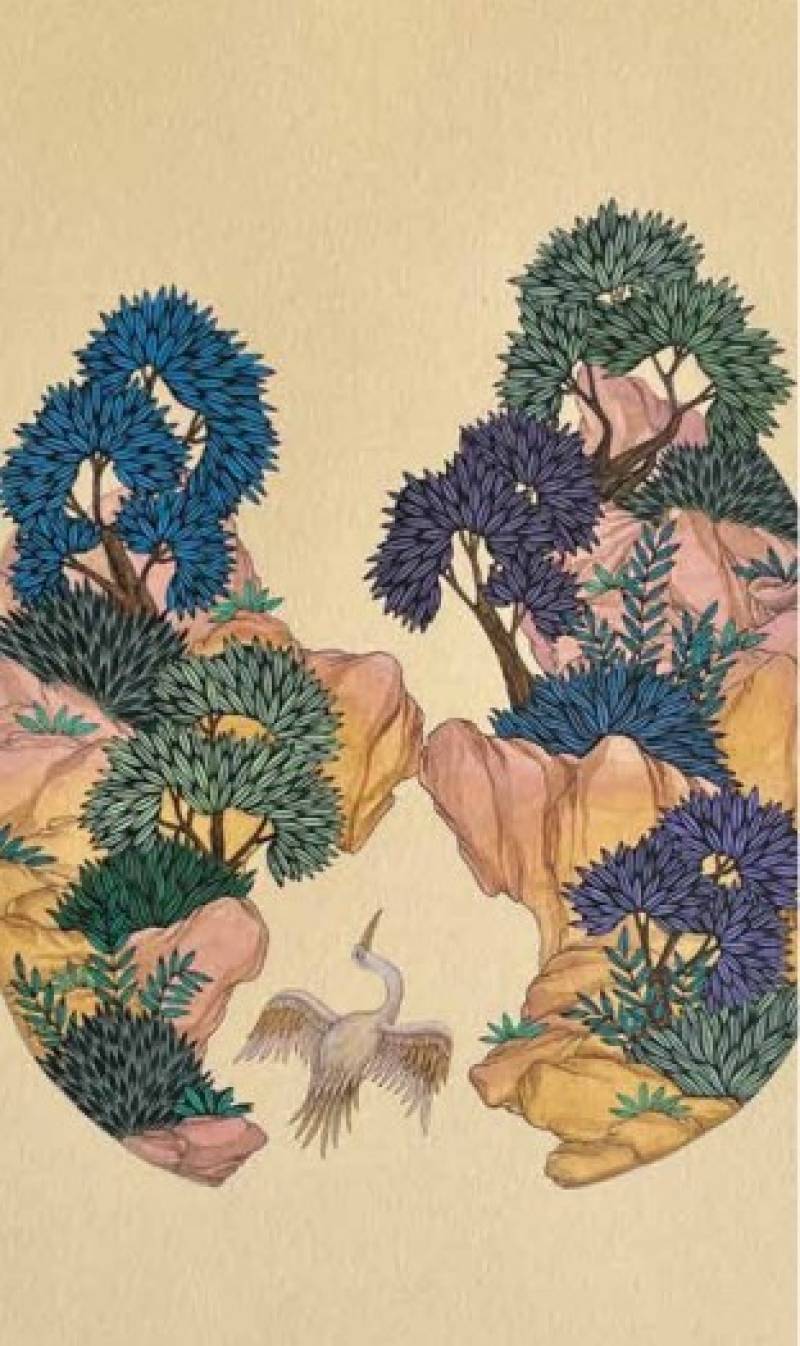
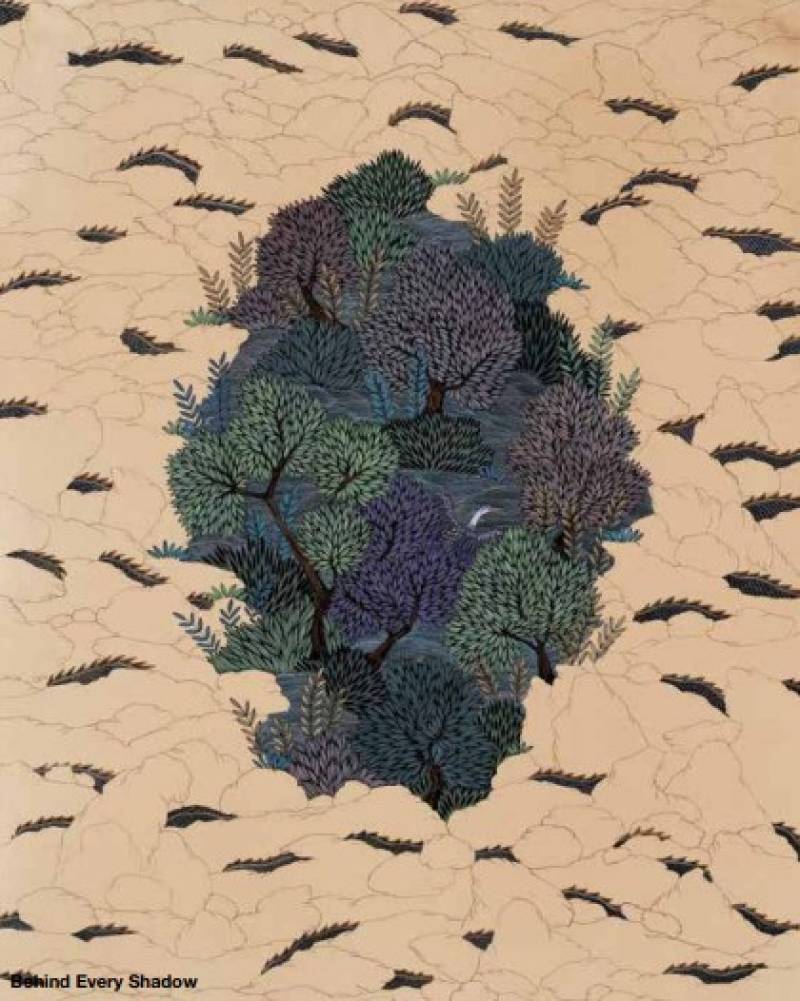
Your artwork exhibited was titled ‘In Harmony’. Tell us a bit about this.
‘In Harmony’ is the last of my series on motherhood so far. It is portraying a moment of peace within myself — a short fleeting moment.
Why miniature art? How long does it take to complete one painting? Have you ever thought of giving up halfway?
It grounds me. Each stroke for me is meditative, like a craft perhaps. I wouldn’t know how to speak my truth any other way. It’s the language I chose to communicate in, and as each day passes, I learn something about myself through the process.
It can vary, my work is very detailed and requires a lot of precision and patience, it takes several weeks to finish one painting, but it really depends. It’s not uncommon for artists to encounter challenges and obstacles during the creative process, and I’m no exception. There have been times when I’ve felt stuck or unsure about how to proceed with a painting, but I always try to push through and keep working until I find a solution.
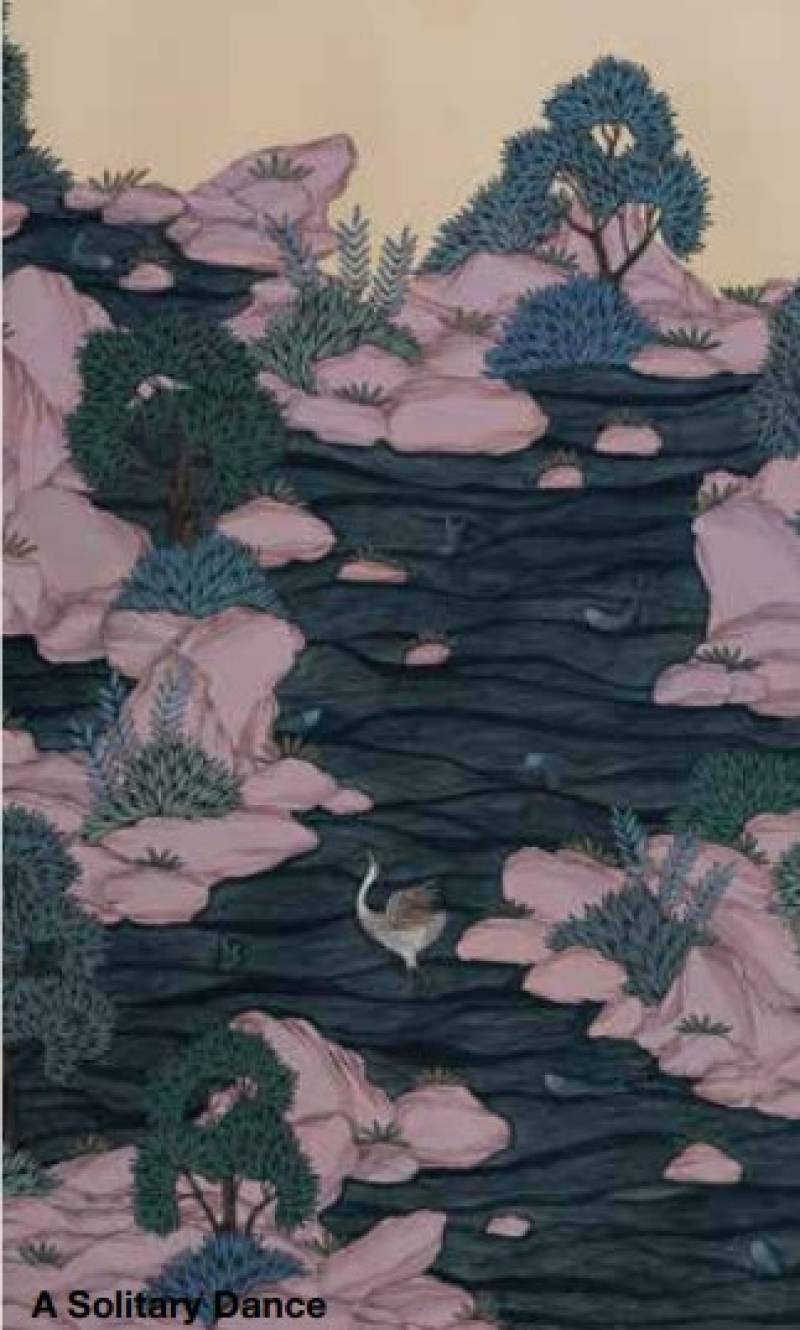
Do you think Pakistan can reach international heights in terms of hosting art exhibitions and different countries? What can we adopt from other countries?
Pakistan has a rich cultural heritage and a vibrant art scene with many talented artists and institutions promoting the arts. I feel we are already a part of the international conversation; having had outstanding work curated and showcased at the Lahore and Karachi Biennale in the past few years. I feel the only reason Pakistan is less accessible to a global audience is the political climate, and the general uncertainty that surrounds us.
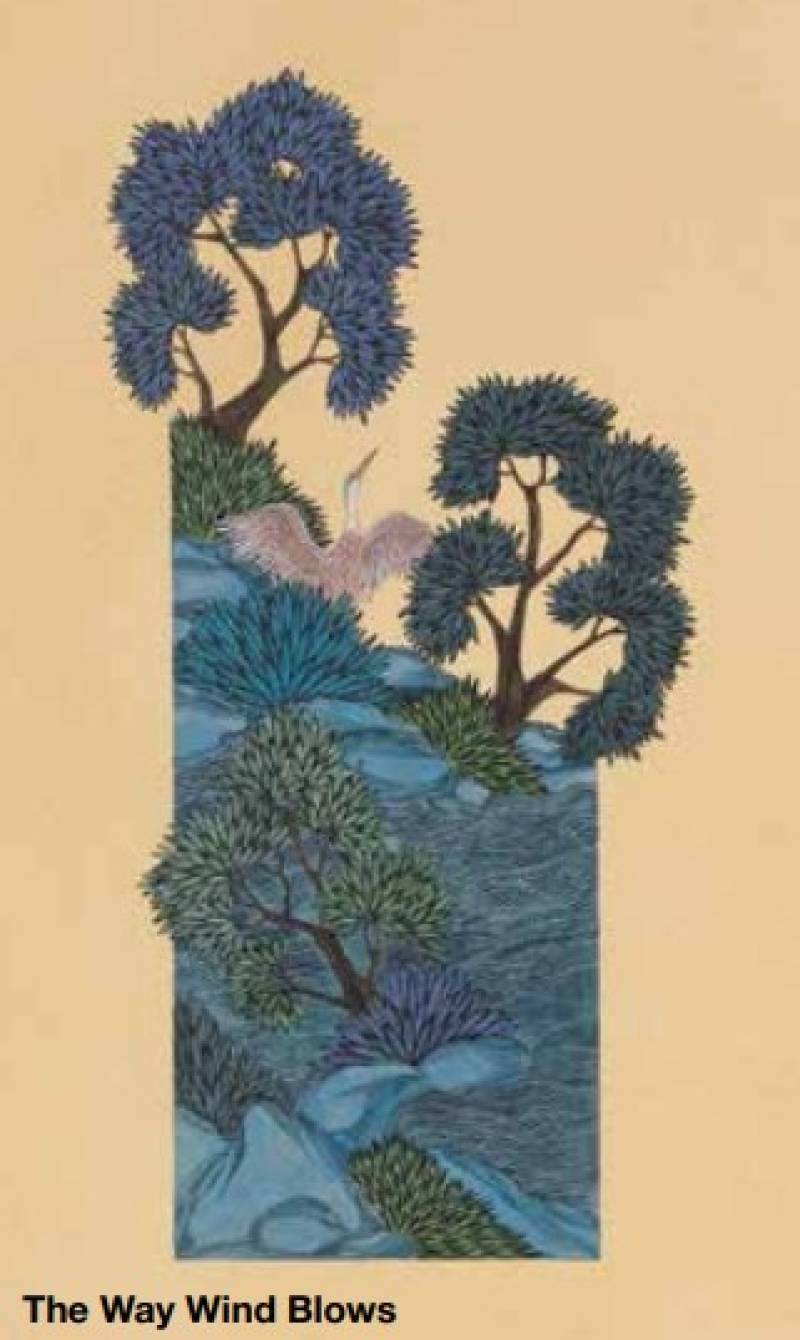
Can you describe one artwork or series from your collection that you feel was pivotal in your career?
I wouldn’t know how to answer that. I find that every painting that I make paves way to the next, In a way each is pivotal in its own right.
How do you overcome creative roadblocks?
Creative roadblocks are an inevitable part of the creative process. When I encounter one, I try to step back. I find that this helps me gain a fresh perspective and come back to my work with renewed energy and focus. I also find it helpful to look for inspiration in unexpected places and to try new techniques or materials. Ultimately, I believe that creative roadblocks can be opportunities for growth and discovery, and I try to embrace them as part of my artistic journey.
'I believe that creative roadblocks can be opportunities for growth and discovery, and I try to embrace them as part of my artistic journey.'
In your opinion, how important is art to society? What do you think about Pakistan’s art scene?
Art has the power to express emotions, convey messages, and bring people together. It can also serve as a form of cultural preservation and a way to promote social change. Regarding Pakistan’s art scene, I feel it is rapidly evolving and gaining recognition on an international level. There are many talented artists in Pakistan who are creating works that are thought provoking and offer a unique insight into a land otherwise cordoned off from the world due to the current political climate.
However, there are also challenges facing the art community, such as lack of government support and limited exposure to the global art market. Despite these challenges, there is a growing interest in art in Pakistan. I am optimistic about the future of the country’s art scene.
PHOTOS: COURTESY MAHA AHMED
